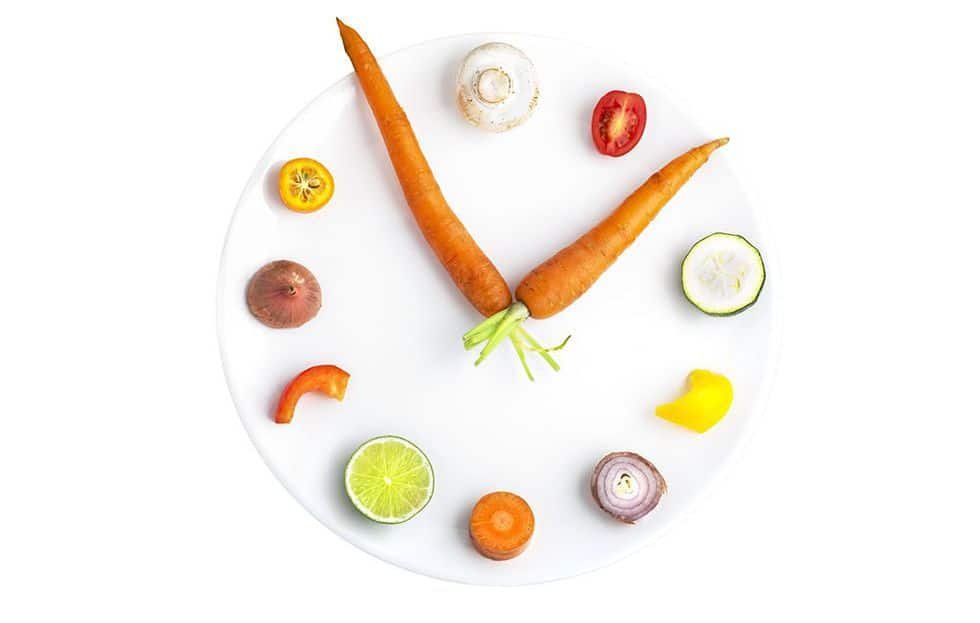My Experiment with Intermittent Fasting – Part II
This is the second of two articles. You can read the first one (my weight loss merry-go-round backstory) here.
I recently said to my husband “I don’t want to lose any more weight. I’m completely happy with my weight now.” His reply: “I don’t think I’ve ever heard a woman say that.”
My experiment with intermittent fasting began with wanting to lose a few pounds, but it’s been more about fitness and health than weight. We talk about weight but my real goal was to lose fat and become fitter.
In July of this year, my weight was creeping up. I didn’t want to count calories ever again. I’d talked with a friend who had been doing intermittent fasting and had lost over 40 lbs, so I started researching. I explored intermittent fasting (IF, also known as time restricted eating), not just for weight loss but for overall health.
I watched the documentary Fasting on Netflix. I watched videos by Valter Longo, Jason Fung, Satchin Panda, and Rhonda Patrick. I bought books on fasting and read dozens of blog articles. I found a ton of conflicting information. I also found a great community of vegan intermittent fasters on Facebook.
Fasting wasn’t entirely new to me. When I was in high school and college, I went through phases of fasting for a day or two a week. Looking back at the times I’ve maintained my ideal weight, I was doing some form of IF without realizing it.
Types of Intermittent Fasting
Intermittent fasting isn’t a diet: it’s a lifestyle. There are several ways to do it. Here are brief descriptions of some of the most popular.
12:12. 14:10, 16:8, 18:6, 20:4
These numbers refer to the number of hours you fast in a day followed by the number of hours in your eating window. So with 16:8, I don’t eat for 16 consecutive hours, then all of my meals for the day are within an eight hour window. You’ll hear intermittent fasters refer to their fasting window and their feeding window. Many people start with 12:12 for a couple weeks and increase the fasting window as they become more comfortable with longer fasting periods.
5:2
While 5:2 is often included as a type of IF, it isn’t really fasting. You eat normally for five days of the week, then on two nonconsecutive days, you limit your calories to 500-600 per day. I found 5:2 to be harder than any of the fasting periods listed above.
Alternate Day Fasting
As the name says, you fast, or eat up to 500 calories, every other day. However, as with 5:2, if you’re eating, you’re not fasting. It can be an effective alternative for people who can’t handle the idea of not eating at all for a period of time.
Eat Stop Eat
This method, popularized by nutritionist and author Brad Pilon, has you fast for 24 hours once or twice a week–that’s it. You plan your meals so you eat every day. For example, you might stop eating for the day at noon, then have your next meal at noon the following day.
Circadian Rhythm Eating
Essentially the same as 14:10 or 16:8, but specifically limiting eating periods to daylight hours, or at least not eating 3-4 hours before bedtime. Much of the research about this method has been done by Dr. Satchin Panda at the Salk Institute.
One Meal a Day (OMAD)
This method limits you to one meal a day, generally consumed within a one-hour period each day. I love OMAD, but you have to plan to get all of your daily nutrients into one meal.
My Experience
I started with 16:8, and found that it was really easy for me: that’s my natural way of eating. After a couple weeks, I extended my fasting window to 18 hours. Some days I fasted longer. The excess weight came off within a couple weeks, and within three months I found that I’d stabilized at around 140 lbs. Yes, 10 lbs less than what I’d considered my goal weight for most of my life.

Now I limit my eating to between 6-8 hours most days, with a 24-hour fast about once a week. More importantly, I don’t eat within 3-4 hours of bedtime.
I don’t remember a time when my weight has been this stable. More important than the pounds, though, I’ve lost 3.5% body fat, down from 26% to 22.5%, and about two inches at the waist.
Besides the weight loss, I have much less pain in my knees (I’ve had surgery on both knees due to injuries from my martial arts days). My energy level is great, and I usually sleep better than I have in years. I don’t get “hangry” as I used to when counting calories (this is my husband’s favorite part of me doing IF!)
One of the appealing aspects of IF is that it’s flexible. If I’m traveling or leading a vegan retreat, I adjust my window so my eating period fits my life. I rarely fast fewer than 16 hours. I get some kind of exercise every day, whether walking, swimming, yoga, or strength training. I always work out toward the end of my fasting period, but you’ll find many self-proclaimed experts who say you should work out at the beginning of your fast. I know what works for me.
Many people like to have strict windows. For example, they fast from 5pm to 9am, and eat between 9am and 5pm. I like the flexibility of moving my windows around. One day I might fast 16 hours, the next day 20 hours, or any period in between.
I should mention that many people link intermittent fasting with a ketogenic diet. In fact, there seems to be a misconception that you must eat a keto diet if you’re doing IF. That’s absolutely not true. My diet isn’t even close to keto and IF has worked remarkably well for me. I maintain a whole-food, plant-based, nutrient-dense diet and eat very few processed foods.
I should also note that there’s a lot of disagreement about whether non-caloric beverages will break your fast. Some experts say even herbal tea or black coffee will cause a digestive response and break a fast. Others says non-caloric beverages are fine. I generally have only water during my fasting window, though I don’t stress about it if I have a cup of black coffee or tea.
Here I’ve just addressed the weight and fat loss benefits I’ve experienced. There is mounting evidence for additional health benefits, including reversing (yes, reversing) diabetes, improved heart health, reduction in inflammation, improved cellular repair, and improved brain health. That’s beyond my scope, but I’ve listed some resources for those who want more information.
If you’re healthy, you can experiment with IF on your own. If you’re under a doctor’s care, consult with your doctor first! This is especially true if you’re taking medication for diabetes, as fasting can significantly change your insulin response. Intermittent fasting is generally not recommended for pregnant or lactating women, or for anyone with a history of eating disorders.
Isn’t It Hard to Not Eat?
Fasting is completely natural. We all do it every day when we’re asleep. IF just extends the time period a bit, much more like our ancestors probably ate.
We live in a culture that has told us for decades that we should be eating all the time to maintain a consistent blood sugar level, and that our metabolism will slow down if we fast. It’s no surprise that the obesity epidemic in the US has followed right along with the “eat all the time” philosophy.
The most surprising aspect of fasting for me is that I’ve redefined what it means to feel hungry. What I think of as hunger is usually a conditioned response–my mind thinks it’s time to eat and the body says “yeah, I’m hungry now!”
Intermittent fasting has taught me that I have much more control over my body’s response to hunger than I thought. Feelings of hunger usually pass pretty quickly, and I never experience them when I fast only 16 hours. Many people find it takes a couple of weeks with IF to adjust and no longer feel hungry. Fasters often share that, after the adjustment period, they think more clearly and have a greater sense of well-being. That has certainly been my experience.
In short, my experiment with intermittent fasting has turned into a lifestyle change. I feel great. It’s sustainable. It works.
Update January, 2019
As I have settled in with intermittent fasting as part of my lifestyle, I typically fast for some time between 19 and 21 hours per day, with a 24-hour fast once a week. My weight is 135, down 5 lbs from November, with a body fat % of 21%.
I was quite relaxed about my fasting during the last week of the year, with Christmas, my birthday, and New Years all in one week. My weight jumped up a bit, but then came right back down when I resumed my normal routine.
Resources:
Intermittent Fasting Update from Harvard Health
Ten Health Benefits of Intermittent Fasting
The amazing ways intermittent fasting affects your body and brain
Valter Longo’s Daily Longevity Diet
Dr. Jason Fung on intermittent fasting for weight loss
Using Time Restricted Eating to Reverse Pre-Diabetes (Salk Institute)
Share this post!


Your story was quite interesting as I’ve recently started IF and I’m on day 38 and have lost close to 20 pounds. I’m a 51 year old male, 5′-11″, with a slender runners frame. When I hit the scale at 174 I knew I was headed in the wrong direction. My belly resembled all my male relative’s. That fat tire beer belly type. My daughter said I had the dad bod. I believe I first saw Fasting on a Pinterest image and just decided to do it with no knowledge of it. Fortunately for me I didn’t know at the time that I was working with a guy that had lost many pounds with Fasting. That coupled with my own research has helped me get down to 156.8 as of this morning. My end goal will be right at 150 which I’m hoping to reach in the next two weeks. Watching the fat melt off of my belly and butt much less other areas of my body has been amazing. I’ve lost an inch and a half around my butt and 2 inches off my belly area. I can waer pants and shorts I previously couldn’t get into a year ago. It was tough at first but if you drink water as I have it really craves those hunger pains. My body has adjusted perfectly, I have energy throughout the day, get plenty of restful sleep and have been eating a whole foods, plant based, diet for a few years so I was already eating the right foods. Your story is encouraging and I hope more will take the challenge towards a better lifestyle, healthier living, a fitter you and just all in all being happier with who we are physically, mentally, spiritually. Please continue to share your successes with others.
Twenty lbs in 38 days? Wow. Congratulations and i wish you continued success.
I plan to write an update to my post in June, which will mark three years of intermittent fasting for me. Spoiler alert: I’m still at my ideal weight, and healthier and more active than I’d been since my 20s.
Great article! Thank you for all the information and personal experience. I am going to start IF and your honest assessment is very encouraging!
Great to hear, Cristel! Please feel free to ask if you have any questions along the way.
You look great Traci. Frankly, your whole life looks kind of inspiring. Congratulations for figuring it all out!!!
Thanks, Marcy. Life is pretty damned good :-). Come visit Guatemala some time!